Valuable Lessons and Essential Resources for Product Leaders
In the modern mortgage banking technology landscape, digital transformation is more than just a buzzword; it’s a necessity to compete effectively. While mortgage demand can vary based on interest rate fluctuations, the shift towards digital mortgage adoption remains consistent. In this environment, SMART Doc generation ensures seamless transactions.
Our journey into the SMART Doc domain was filled with unexpected obstacles. Our goal was clear: to boost digital mortgage adoption by simplifying MISMO standards using innovative, adaptable solutions. We have a strong background in consulting with top eMortgage technology vendors and leading SMART Doc validation standards, so our strategy was clear. However, we faced numerous unexpected challenges along the way.
SMART Doc 101
Let’s start with a brief overview of SMART Docs. SMART stands for Secure, Manageable, Archivable, Retrievable, Transferable. SMART Docs ensures that the included data is accurate. Since the native source data is embedded in the document throughout its mortgage and title lifecycle, the data can be auto verified and auto certified from origination to closing. Each document is wrapped in a tamper-evident seal to safeguard against any unauthorized alterations. SMART Docs truly delivers the security and compliance that the industry and regulators are demanding today.
The SMART Doc Challenge: Easier Said Than Done
Our cornerstone products, TruFile SMART Doc® Generation and TruFile SMART Doc® Compliance, were developed in response to the complexities of SMART Doc generation. A widespread oversight in the industry is the intricacies involved in creating and validating SMART Docs, which are essential for ensuring interoperability and compliance with MISMO, eVault Vendors, MERS eRegistry, and Investor Standards.
Mike Cafferky, eMortgage Principal at Fannie Mae underscores the critical nature of these efforts, stating,
“Uniform interpretation of SMART Doc standards across the industry is imperative for scalable growth. When we all play by the same rules, we ensure a stronger, more reliable eMortgage ecosystem. Embracing this uniformity and the automation it enables is the key to a future where efficient, digital mortgages are the norm, not the exception.”
Producing SMART Docs is not a simple task. Ensuring that these documents are compliant, interoperable, and legally binding presents its own set of challenges. This oversight has resulted in interoperability issues, unnecessarily affecting the smooth transfer of eNotes within the mortgage ecosystem.
Key Insights from Our Experience
Based on our experience, we can share the following insights for those considering generating SMART Docs:
1. Understand the Technical Landscape:
Dive into MISMO standards and fully understand SMART Doc specifications. This understanding is vital for producing compliant and interoperable documents. In our efforts, we have found over 450+ high level requirements in the MISMO SMART Doc V1 specification alone.
2. Prioritize Comprehensive Validation:
A strong validation platform is essential to guarantee that your SMART Docs align with industry and investor criteria. Without meticulous validation, the potential for interoperability problems increases significantly.
3. Engage with Industry Communities and Resources:
Participation in communities such as the MISMO eDoc/eMortgage Vault Interoperability Community of Practice and the MISMO eMortgage Community of Practice offers priceless insights. These platforms gather diverse stakeholders to discuss, recognize, and address issues, opportunities for standardization, and regulatory compliance efforts concerning electronic documents and eVaults.
4. Stay Updated on Changing Standards:
As eVault standards and institutional requirements evolve, including those from Fannie Mae and Freddie Mac, being informed is essential. Resources such as the Guide to Delivering eMortgages to Fannie Mae and Closing and Delivering eMortgages to Freddie Mac are crucial for understanding current eNote requirements and the changing digital mortgage scene.
Viant Eye’s Solutions: Addressing Core Issues
Despite the challenges, our experiences led us to develop solutions that tackle these problems directly. TruFile SMART Doc Generation and TruFile SMART Doc Compliance were designed to streamline this intricate procedure, ensuring industry compliance while optimizing efficiency.
The rise in digital mortgage adoption is evident. Fannie Mae’s refinance volume using eNotes (SMART Docs) increased from 1% in 2018 to over 20% starting in 2021, and the securitization of Ginnie Mae eNotes jumped from 17,721 in 2021 to 111,615 in 2023. The discussion around MISMO is also intensifying, with media mentions doubling since 2018.
While we offer ready-to-deploy solutions, we believe in empowering the industry with knowledge and insights to foster a community geared towards digital excellence.
Whether you decide to collaborate with a solution provider like Viant Eye or embark on this journey independently, possessing a comprehensive understanding of the challenges and solutions is crucial. We’ve compiled some resources below that will help.
As the mortgage technology landscape continues to evolve at a rapid pace, positioning your digital mortgage initiatives for success has never been more critical. For those ready to lead and innovate, Viant Eye stands as your partner in navigating these changes with expertise and cutting-edge solutions. Contact Viant Eye at info@vianteye.com to elevate your digital mortgage strategy and secure a competitive edge in this dynamic market.

By Chris Trujillo
Director of Product Strategy, Viant Eye
RESOURCES
Guides
- Guide to Delivering eMortgages to Fannie Mae
- Overview of eMortgages, including technology, legal, eligibility, signatures, delivery, sale, and servicing. – Topic B8-8-01
- Requirements for creating, closing, correcting eNotes, including uniform eNotes, record retention, registering and correcting. – Topic B8-8-02
- Delivering eMortgages to Fannie Mae, including MERS eDelivery, eNote transfer, warehouse lending, custodial agreements, certification, and loan data. – Topic C1-2-04
- Permitted clerical errors for eNotes and errors requiring a new Note. – Topic E-2-076
- Requirements of the eNote header, footer, and clause. – Topic E-2-07
- Closing and delivering eMortgages to Freddie Mac
- Ginnie Mae Digital Collateral Program Guide
- FHA Note Requirements – See “Instructions for Model Notes”
- VA Note Requirements – Topic 1.a
- USDA Note Requirements – USDA delegates Note responsibility to lenders. Also see handbook 3555 Section #15.4 ELECTRONIC SIGNATURES
- FHLB of Atlanta – Electronic Promissory Notes (eNotes) Model Collateral Acceptance Requirements and Guidelines
- FHLB of Chicago – Member Collateral Electronic Promissory Notes (eNotes) Acceptance Requirements and Guidelines
- FHLB of Dallas – eNotes Collateral Requirements & Guidelines
- FHLB of Des Moines – Electronic Promissory Notes (eNotes) Model Collateral Acceptance Requirements and Guidelines
- FHLB of Indianapolis – Electronic Promissory Notes (eNotes) Model Collateral Acceptance Requirements and Guidelines
- FHLB of Pittsburgh – Member Collateral Electronic Promissory Notes (eNotes) Acceptance Requirements and Guidelines
- FHLB of Topeka – Electronic Promissory Notes (eNotes) Model Collateral Acceptance Requirements and Guidelines
- SMART Doc eNote Data Mapping and Format Guide
- Delve into the latest Smart Doc 1.02 Implementation Guide for an in-depth understanding of eNote requirements. Access the guide.
Technical Team Resources
- Tools
- XMLSpy – XML development tool, used to validate against DTD / Schema. Windows only.
- Oxygen XML – XML development tool, used to validate against DTD / Schema, supports OSX.
- GridML – online only, xml schema viewer.
- Specifications
- SMART Doc Specification v1.02 (Used for eNotes)
- A cornerstone document detailing SMART Doc specifications to aid in your journey towards compliance and interoperability. Access the specifications.
- SMART Doc V3 Verifiable Profile specification and sample documents. Access the specifications.
- ADOBE PDF 1.7 Spec Access the standard.
- SMART Doc Specification v1.02 (Used for eNotes)
- XML Digital signature
- C14N cross platform compatibility issues – Default .NET implementation varies from the W3C spec
- XML Sig verification failure due to Windows .NET
- Microsoft .Net notes on SignXML implementation
MISMO Groups
- eDoc/eMortgage Vault Interoperability Community of Practice (CoP)
- This community congregates eVault Vendors, Document Vendors, Lenders, and GSEs to deliberate on challenges and seek standardization opportunities in electronic documents and eVaults. Explore the community.
- eMortgage Community of Practice (CoP)
- A hub for stakeholders to develop specifications, document profiles, and guidelines essential for implementing electronic mortgage documents through every stage. Explore the community.
- Verifiable Profile SMART Doc Development Workgroup (DWG)
- The Verifiable Profile SMART Doc Development Workgroup (DWG) is working to prepare samples of select documents to support the MISMO SMART Doc® V3 Verifiable Profile specification. Explore the community.
MISC
- MISMO Digital Mortgage Resource Center
- Serves as a comprehensive hub for various standards, resources, and educational materials related to the implementation of digital mortgage solutions. Digital Mortgage Resource Center.
